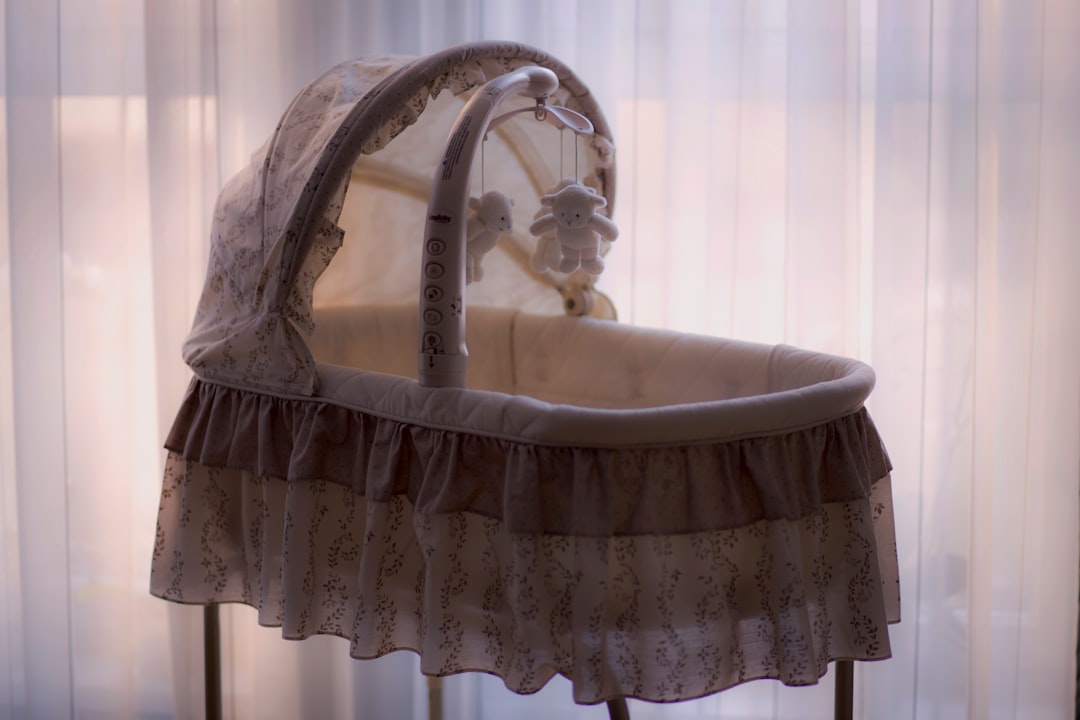Bassinet vs. Cot
What's the Difference?
A bassinet and a cot are both types of baby beds, but they have some key differences. A bassinet is a small, portable bed that is designed for newborns and infants up to around six months old. It is usually made of lightweight materials and has a compact size, making it easy to move around the house or even take on trips. On the other hand, a cot is a larger and more permanent bed that is suitable for older babies and toddlers. It is typically made of sturdy materials and has a fixed location in the nursery. While a bassinet offers convenience and closeness to the parent, a cot provides more space and longevity as the baby grows. Ultimately, the choice between a bassinet and a cot depends on the specific needs and preferences of the parents and the age of the baby.
Comparison

| Attribute | Bassinet | Cot |
|---|---|---|
| Size | Smaller and more compact | Larger and bulkier |
| Portability | Highly portable, easy to move around | Less portable, usually kept in one place |
| Age Range | Typically used for newborns up to 6 months | Used for infants and toddlers up to 3 years |
| Design | Often has a hood or canopy for shade | Usually has a fixed design without a hood or canopy |
| Adjustability | Usually has adjustable height or incline options | Fixed height, no adjustable features |
| Price | Generally less expensive | Usually more expensive |
| Longevity | Short-term use, outgrown quickly | Long-term use, can be used for multiple years |

Further Detail
Introduction
Choosing the right sleeping arrangement for your newborn is an important decision for any parent. Two popular options are bassinets and cots, each with their own unique attributes. In this article, we will compare the features of bassinets and cots to help you make an informed choice for your little one's comfort and safety.
Portability
One of the key advantages of a bassinet is its portability. Bassinets are typically smaller and lighter than cots, making them easy to move around the house. This portability allows you to keep your baby close to you, whether you are in the living room, kitchen, or bedroom. Additionally, bassinets often come with wheels or handles, further enhancing their mobility. On the other hand, cots are generally larger and more stationary, designed to be a permanent fixture in the nursery.
Space Efficiency
If you have limited space in your home, a bassinet may be the better choice. Bassinets are compact and can fit comfortably in small bedrooms or even next to your own bed. They take up less floor space compared to cots, allowing you to maximize the available area. On the contrary, cots require a dedicated space in the nursery, which may not be feasible for families living in apartments or smaller houses.
Age and Weight Limitations
Bassinets are specifically designed for newborns and infants up to around six months old or when they start rolling over or pulling themselves up. They provide a cozy and secure environment for your little one during their early months. On the other hand, cots are suitable for older babies and toddlers. They have higher weight limits and offer more space for your growing child to move around comfortably. Cots can accommodate your child's needs for a longer period, making them a more cost-effective option in the long run.
Convenience
When it comes to convenience, bassinets have some advantages. They are usually equipped with features like adjustable height, allowing you to position the bassinet at a comfortable level for easy access to your baby. This is particularly beneficial for mothers recovering from childbirth or parents who prefer to keep their baby within arm's reach during nighttime feedings. Some bassinets also come with storage compartments, providing a convenient place to keep essentials like diapers, wipes, and extra clothes. Cots, on the other hand, may require you to bend over or reach down to pick up your baby, which can be less convenient, especially for parents with back problems.
Safety
Both bassinets and cots are designed with safety in mind, but there are some differences to consider. Bassinets are generally considered safer for newborns due to their smaller size and enclosed sleeping space. The cozy environment of a bassinet can help newborns feel secure and prevent them from rolling or moving around too much during sleep. However, as your baby grows and becomes more active, a cot with its larger size and sturdy construction may offer better safety. Cots often have adjustable mattress heights, allowing you to lower the mattress as your child grows to prevent climbing or falling out.
Longevity and Cost
When it comes to longevity, cots have the upper hand. As mentioned earlier, cots can accommodate your child's needs for a longer period, from infancy to toddlerhood and sometimes beyond. Investing in a cot can save you money in the long run, as you won't need to purchase a larger bed as your child outgrows the bassinet. However, if you plan to have multiple children or prefer a more temporary sleeping arrangement, a bassinet may be a more cost-effective choice. Bassinets are generally less expensive than cots and can be reused for subsequent babies.
Conclusion
Choosing between a bassinet and a cot depends on various factors such as portability, space efficiency, age limitations, convenience, safety, longevity, and cost. Bassinets offer portability, space efficiency, and convenience for newborns, while cots provide more space, longevity, and cost-effectiveness for older babies and toddlers. Consider your specific needs, available space, and budget to make the best decision for your little one's comfort and your peace of mind.
Comparisons may contain inaccurate information about people, places, or facts. Please report any issues.